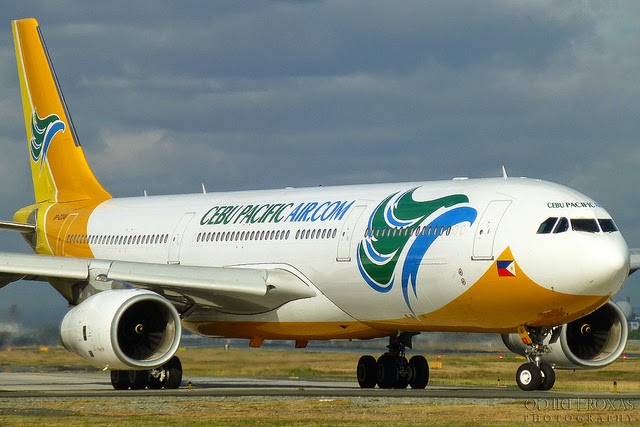Cebu Pacific Cautious on Expansion to US and Europe
Although the United States recently lifted the Philippines to Category 1 status, and the European Union recently lifted the ban preventing Cebu Pacific from flying to Europe, the country's largest low-cost carrier insists that plans for expansion are long-term. Unlike rival Philippine Airlines that is busy making announcements of new routes, Cebu Pacific is adopting a more cautious approach.
 |
| Copyright Photo: Diego Roxas/PPSG |
"With nearly a million Filipinos working in the European Union, we look forward to offering our trademark lowest fares and the most extensive route network in the Philippines," said Lance Gokongwei, President & CEO of Cebu Pacific. However, the airline still has a number of obstacles to overcome including securing new long-range aircraft, analysing markets, defining its international routes, and securing regulatory approvals.
"We are still examining all our options at this point," added Gokongwei. "We have not reached any decision on where to fly and we have no definitive timeline for starting flights to Europe. We still need to get permits, we need to go with the process - ideally within a year."
Cebu Pacific does not presently have any aircraft in its fleet that is capable of flying to Europe or the United States. The existing A330-300 aircraft in the Cebu Pacific fleet can only fly between 11 to 12 hours. That currently limits the airline to the US destinations of Hawaii and Guam.
Although Cebu Pacific currently has pending orders for 50 aircraft from Airbus to be delivered by 2021, none of the aircraft on order include a long range model. While Cebu Pacific has not ruled out a possible order for a long range jet, it is still considering its options. "These are long term decisions. We have to do the studies first," said Gokongwei. "We still have to digest a lot of the narrow bodied planes and A330's coming in."
Meanwhile, Cebu Pacific is focused on its existing route network within Asia with plans to expand further into the Middle East and to Australia with its A330 fleet. "With the lifting of the EU ban, this network is about to get even bigger," said Gokongwei. "But our priority is the Middle East and Australia."
Cebu Pacific is the only profitable airline in the Philippines while all other carriers have reported losses. Much of that can likely be attributed to their strict business model and cautiously optimistic management philosophies.
That is a sharp contrast to Philippine Airlines that rolled out ambitious expansion plans and placed a multi-billion dollar aircraft order shortly after San Miguel Group took over management. The parent company of Philippine Airlines recently reported a P11.85 billion loss for the first nine-months of this fiscal year, more than four times the loss reported the previous year.
Although industry experts believe that there is a large enough market in the United States to sustain both Philippine carriers, suggesting that competition will not be fierce, Cebu Pacific intends to focus on its current business model and its acquisition of Tigerair Philippines, leaving long-haul flights to the United States to be studied over the course of this year.
"We still have a lot of work to do. We are still going to open up Middle East and Australia in the next couple of years. These require a lot of investments," said Gokongwei. He was not as confident about Europe as Ramon Ang noting that while Cebu Pacific could take advantage of the market potential in Europe through commercial agreements with other carriers currently serving those markets, there is still intense competition from the Gulf carriers that are subsidized. "Middle Eastern carriers are not pushovers. They are fantastic carriers and fantastic competitors," added Gokongwei.
Cebu Pacific announced last week that it expects to carry approximately 17 million passengers in 2014, representing an increase of 18 percent over the 14.4 million carried in 2013. According to Gokongwei, the increase in capacity is directly attributed to the acquisition of Tigerair Philippines that has increased the airline's capacity to serve new routes.
Gokongwei noted that without the acquisition, Cebu Pacific would have grown passenger traffic in 2014 by only 4 percent. "The economy is robust. We see opportunity for growth across international and domestic markets," said Gokongwei. He added that the company should achieve the "break even" point on the acquisition of Tigerair Philippines by the summer season of 2015.







No comments